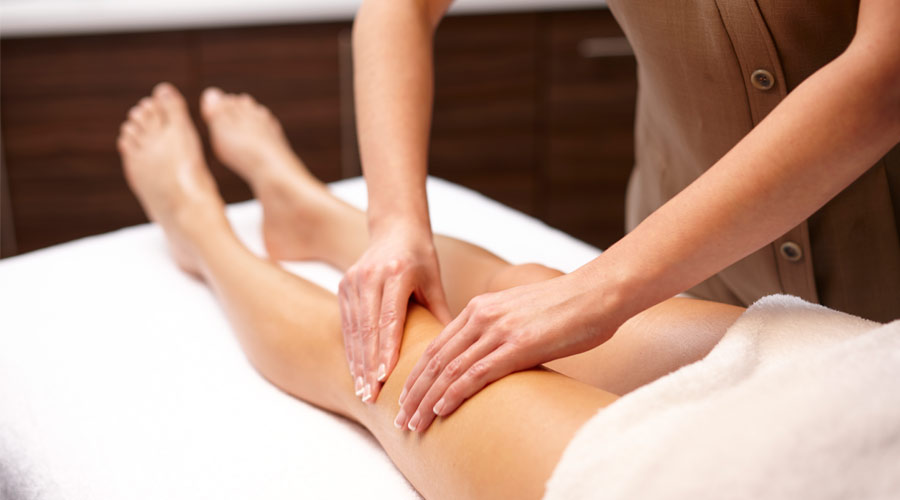In today’s fast-paced world, finding moments of serenity and self-care can be a challenge, especially for women juggling multiple roles and responsibilities. At Nurture Yourself, we understand the unique pressures and stresses women face, and we are dedicated to providing an oasis of tranquility through our expert massage services designed to promote deep relaxation and rejuvenation. Our philosophy is centered on the belief that self-care is not a luxury but a vital necessity. With this in mind, we have curated a range of massage therapies tailored to address the specific needs of women, ensuring that each session is not just a treatment but a transformative experience. From the moment you step into our calming environment, you are greeted with an ambiance designed to ease your mind and soothe your senses. The gentle lighting, soothing music, and aromatic scents all contribute to creating a sanctuary where you can escape the demands of daily life and focus solely on your well-being.

Our team of highly trained massage therapists brings a wealth of expertise and a deep understanding of the female body to each session. Whether you are seeking relief from chronic pain, stress, or simply looking to indulge in some much-needed relaxation, our therapists are skilled in various techniques to meet your needs. Our services include Swedish 여성전용마사지 massage, known for its gentle strokes and relaxing effects; deep tissue massage, which targets deeper muscle layers to alleviate tension; and hot stone therapy, which uses heated stones to enhance relaxation and ease muscle stiffness. In addition to our signature treatments, we offer specialized services such as prenatal massage for expectant mothers, designed to alleviate pregnancy-related discomfort and promote overall well-being; and postnatal massage, which aids in recovery and helps new mothers regain their strength and balance. Our goal is to ensure that every woman who walks through our doors leaves feeling refreshed, revitalized, and deeply nurtured.
At Nurture Yourself, we also emphasize the importance of personalized care. We take the time to understand each client’s unique needs and preferences, allowing us to tailor our approach and techniques for optimal results. Our therapists are committed to creating a safe and supportive space where you can openly communicate your concerns and goals, ensuring that each session is as effective and enjoyable as possible. Self-care is a journey, and we are here to guide and support you every step of the way. By choosing Nurture Yourself, you are investing in your health and well-being, and allowing yourself the opportunity to experience profound relaxation and rejuvenation. Our mission is to help you reconnect with yourself, reduce stress, and enhance your overall quality of life. Embrace the chance to unwind and nurture yourself with our expert massage services. Schedule your appointment today and take the first step towards a more balanced and serene you.
A beautiful and healthy smile is more than just an aesthetic feature it is a reflection of overall well-being. Choosing a premier dentist ensures that you receive the highest level of care, whether you need routine maintenance or specialized treatments. Expert dental professionals are committed to using advanced techniques and the latest technology to provide comprehensive oral health solutions. With a focus on both function and aesthetics, a premier dentist can help you achieve a confident and radiant smile while ensuring long-term dental health. One of the key differences of expert dental care is the personalized approach. Rather than offering generic solutions, a skilled dentist takes the time to understand your unique needs, preferences, and concerns. Through detailed consultations and thorough evaluations, they create customized treatment plans designed to enhance your oral health.
Whether you require preventive care, cosmetic enhancements, or restorative procedures, a tailored approach ensures that every treatment is suited specifically to you. State-of-the-art technology plays a vital role in modern dentistry, and a top-tier dental practice invests in the latest advancements. Digital imaging, laser dentistry, and minimally invasive procedures allow for more precise diagnoses and efficient treatments. These innovations not only enhance the quality of care but also ensure a more comfortable experience for patients. From pain-free procedures to faster recovery times, Dental Crowns Houston advanced technology transforms dental visits into stress-free experiences. Beyond technical expertise, a premier dentist prioritizes patient comfort and satisfaction. A welcoming environment, friendly staff, and a compassionate approach can make all the difference in easing dental anxiety. Understanding that many patients feel apprehensive about dental visits, top professionals focus on creating a soothing atmosphere where you feel at ease.
Clear communication, gentle techniques, and sedation options further contribute to a relaxed and pleasant experience. Preventive care is a cornerstone of expert dental services, ensuring that potential issues are identified and addressed before they escalate. Regular check-ups, professional cleanings, and early intervention strategies help maintain strong teeth and gums. Education is also a fundamental part of preventive dentistry patients receive guidance on proper oral hygiene habits, nutrition, and lifestyle choices that impact dental health. By emphasizing prevention, a skilled dentist helps you avoid complex procedures and maintain a bright, healthy smile for years to come. Choosing expert dental care means investing in the long-term health and beauty of your smile. With a combination of experience, innovation, and patient-focused care, a premier dentist can transform your dental experience into one of trust and confidence. Whether you are seeking routine care or advanced procedures, the right dentist makes all the difference in achieving optimal oral health and overall well-being.
Business Trip Massage therapy is a holistic practice that offers numerous benefits for both the body and mind. For centuries, it has been regarded as a natural remedy to alleviate physical discomfort, reduce stress, and promote overall well-being. Today, Business Trip Massage therapy continues to be a popular choice for individuals seeking relief from tension, pain, and fatigue, as well as those simply looking to relax and unwind. The therapeutic touch of a skilled Business Trip Massage therapist can provide a sense of relief, helping the body to heal and rejuvenate naturally. One of the key benefits of Business Trip Massage therapy is its ability to ease muscle tension and pain. Whether caused by physical activity, poor posture, or stress, tight muscles can lead to discomfort and limit mobility. Regular Business Trip Massage sessions help to release the knots and tightness in muscles, promoting relaxation and improved circulation. This not only reduces pain but also enhances flexibility, allowing individuals to move more freely and comfortably.

In addition to its physical benefits, Business Trip Massage therapy is also known for its positive impact on mental and emotional health. The calming effect of Business Trip Massage helps to reduce stress and anxiety, promoting a sense of relaxation and peace. During a Business Trip Massage session, the body’s levels of cortisol, the stress hormone, decrease, while the production of endorphins, the body’s natural feel-good chemicals, increases. This helps to elevate mood, reduce feelings of anxiety, and improve overall emotional well-being. Regular Business Trip Massage can provide individuals with a sense of mental clarity, allowing them to better cope with the pressures of daily life. Business Trip Massage therapy also plays a crucial role in improving sleep quality. Many individuals struggle with insomnia or disrupted sleep due to stress, anxiety, or physical discomfort. By promoting relaxation and reducing muscle tension, Business Trip Massage can help the body unwind before bedtime, making it easier to fall asleep and stay asleep throughout the night.
For those looking to maintain their overall health and wellness, regular Business Trip Massage therapy can serve as an important preventive measure. It helps to improve circulation, boost the immune system, and promote detoxification by stimulating the lymphatic system. Business Trip Massage also supports better posture by addressing muscle imbalances and encouraging proper alignment. By incorporating Business Trip Massage into a regular wellness routine, individuals can enjoy long-term health benefits, including increased energy levels, better flexibility, and improved posture and visit this page. Lastly, Business Trip Massage therapy is a wonderful way to prioritize self-care and mindfulness. In today’s fast-paced world, it is easy to neglect personal well-being in the midst of busy schedules and daily responsibilities. Taking the time to schedule a Business Trip Massage can be an opportunity to focus solely on one’s own needs, allowing the mind and body to recharge.